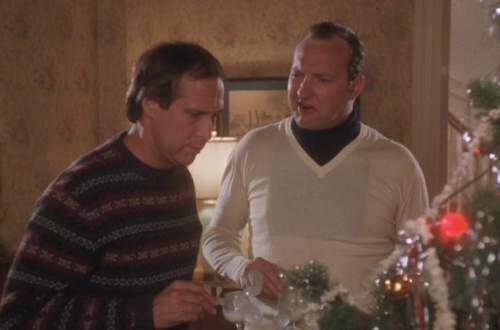masculinity | Clothes on Film
-

From stills of this film alone you could easily be forgiven in thinking that I am Love (Io sono l’amore, 2009) was set during the 1960s. The designer clothes draped worn by lead members of the Recchi family, as selected by costumer Antonella Cannarozzi, are generally minimalist, in plain colours with little embellishment. I am Love is actually set in Europe around 2000, but its central characters are trapped as the well-heeled repressed of the sixties. Just as sexual, artistic and cultural expression was blossoming, the old guard struggled to make sense of this new world so regressed even more vehemently into their old one. The Recchi’s seem to live…
-

In honour of The Times’ film critic Kevin Maher’s list of iconic movie rebels, we take a look at what it truly takes to make a tough guy in cinema. What constitutes a tough guy, as in ‘man’, on film is usually a traditional interpretation of masculinity. There is always room for the sensitive hero in a sweater and slacks, but for those who watch movies as ingrained wish fulfilment, the sexy and sweaty man’s man needs suitable attire to reflect his personality. But it is not just about the garments themselves. A jacket is a jacket, but a leather jacket is a symbol. A wax jacket on the other…
-

Internal Affairs (1990) is an excellent stone cold thriller. The costumes are a subtle tease, revealing personal information that the characters never say out loud. Like many movies released in the late 1980s/1990s, Internal Affairs radiates uneasiness caused by shifting societal attitudes – anything that threatens a straight male chauvinist black-and-white world. Costume designer Rudy Dillon punches through this black-and-white world with ensembles that poke fun at the status quo and subsequently subvert them with eroticism, perhaps ironically using only a colour scheme of black and white. The straight white male chauvinist is Dennis Peck (Richard Gere), a police officer in Los Angeles who controls his colleagues by involving them…
-

In the very opening scene of Rocky (1976, costume designer Robert Cambel), we see the title character in the ring, bare chested, hands encased in boxing gloves, the picture of sporting violence and masculinity. But this is no more than a surface assumption. Not two minutes later, we see Rocky Balboa (Sylvester Stallone) shrug on his faded brown towelling dressing gown, with “The Italian Stallion” embroidered on the back, and things start to shift. This is not a macho film concerned with the fight alone, but an exploration of masculinity in all its guises – the assumptions, the pretence and the reality. Clothes play an important part in this, both…
-

If you have played The Last of Us on Playstation 3 it has likely ruined video gaming for you. The world created is so vivid and believable that every game afterward just feels dated and empty. Throughout, The Last of Us is unwaveringly real, full of seemingly inconsequential details such as every weapon or object you carry being attached or able to fit into your character’s backpack. Contrast this with Grand Theft Auto V where a rocket launcher appears out of your trouser pocket and it’s clear that if game developers really want to create a living, breathing parallel to reality they need to treat it as reality – no…
-

Moments of sartorial significance, and that glimmer of recognition that we feel upon seeing an onscreen outfit worn more than once are found throughout Smooth Talk, Joyce Chopra’s underseen 1986 adaptation of a Joyce Carol Oates short story. The film is rife with all the monotony of life and charming ensembles we expect of a teenage girl in the summer, yet it simultaneously offers complexity and creepiness. Laura Dern plays Connie, an ingénue spending her days as an “unfinished girl, waiting for completion of some sort” (Quart 74). In her essay, “Smoothing Out the Rough Spots: The Film Adaptation of ‘Where Are You Going, Where Have You Been?’” Rebecca Sumner…
-

Meryl Streep’s timeless Burberry trench coat is one of the most recognisable contemporary costumes of 1970s.
-

Tom Hardy heralds dawning of the knitwear anti-hero. Margot Wilson discusses her use of the cardigan for Lawless.
-

Doris Day’s last hurrah for 1950s fashion wearing some of the most exquisite costumes ever seen on screen.
-

Betsy Heimann chats exclusively about one of the most iconic costumes of the 1990s.
-

Ruth E. Carter’s work on Do the Right Thing is a masterclass in how costume can influence the look and feel of a film.
-

Crazy, Stupid Love is every inch the ‘fashion film’, both in terms of narrative and costume designer Dayna Pink’s elegant menswear styling.


































